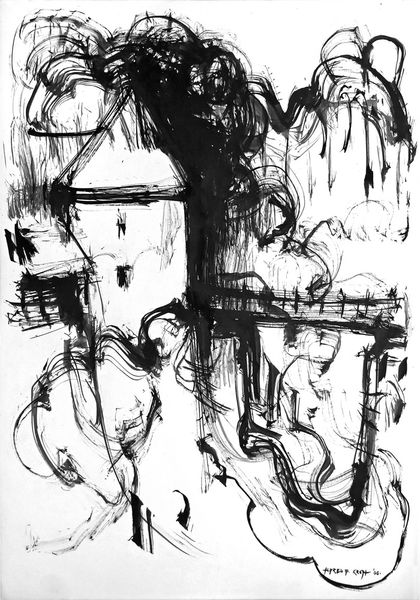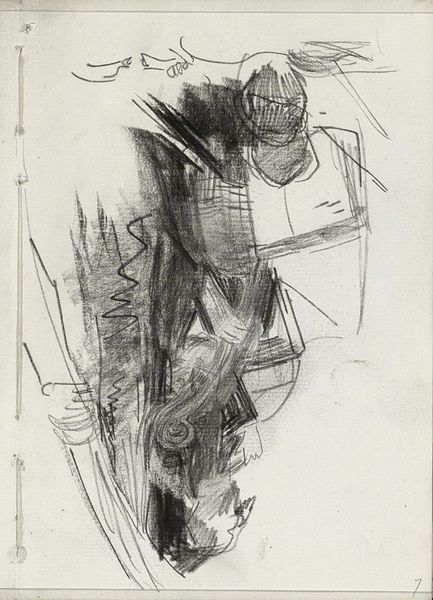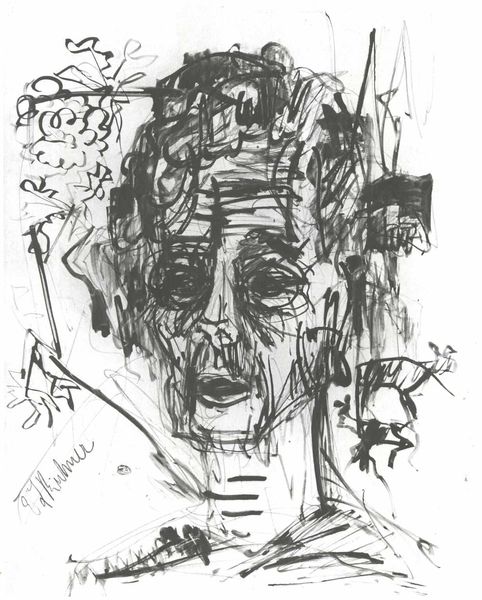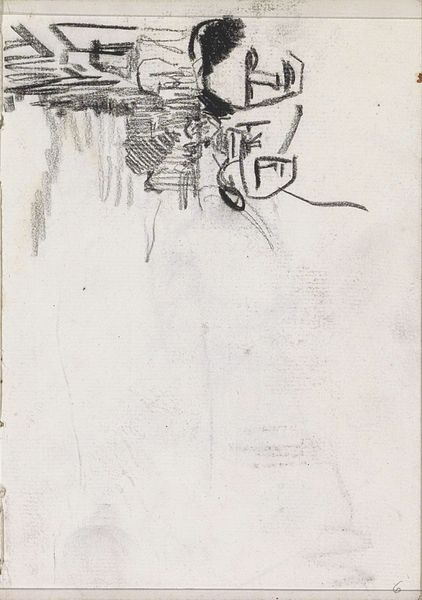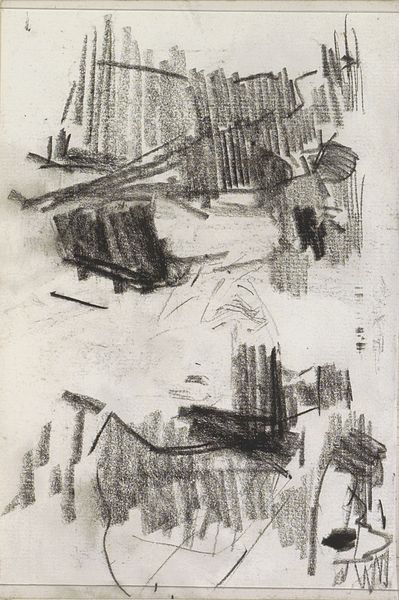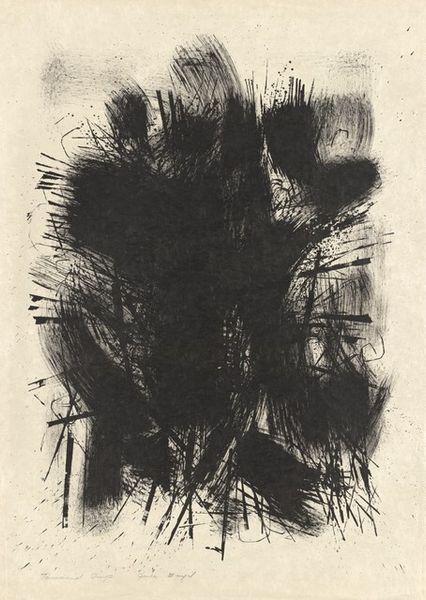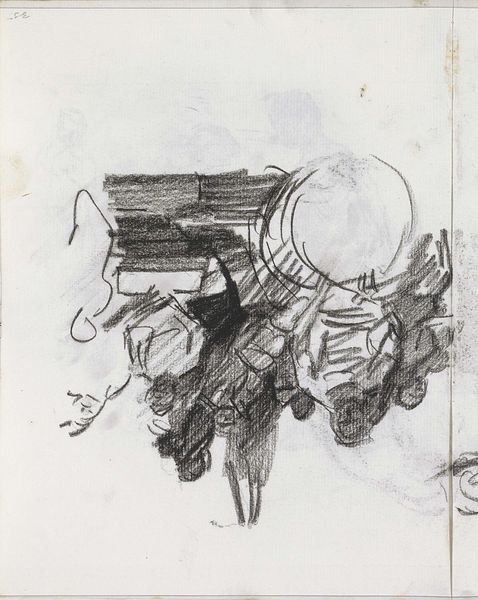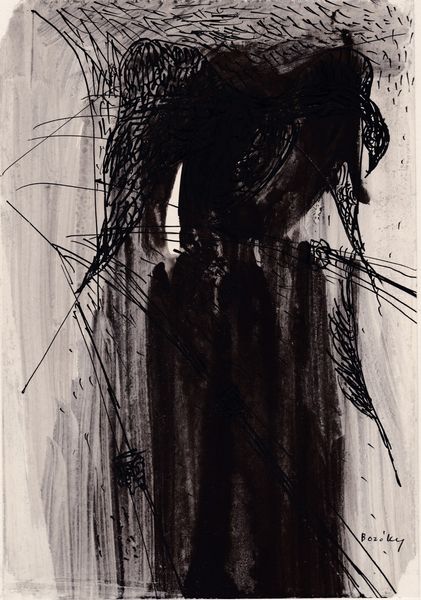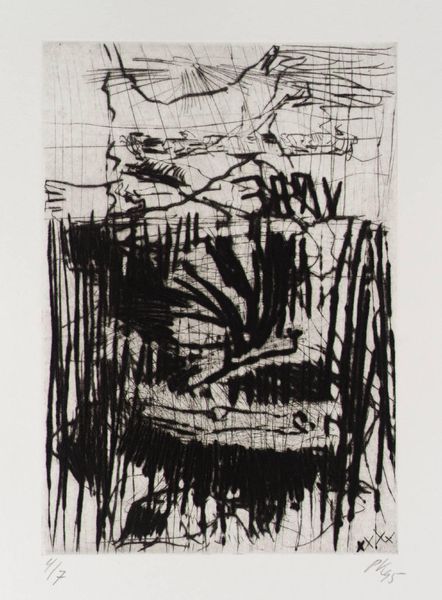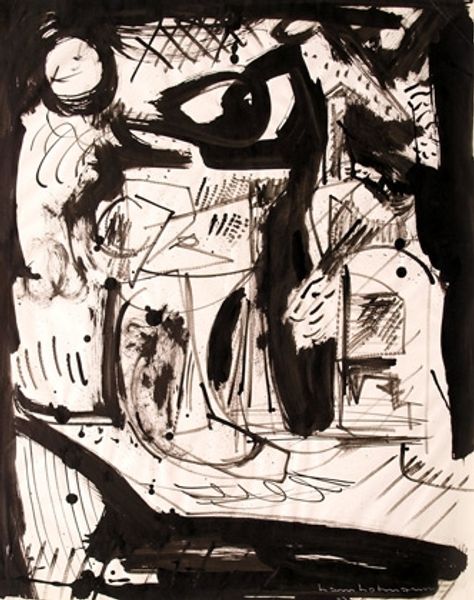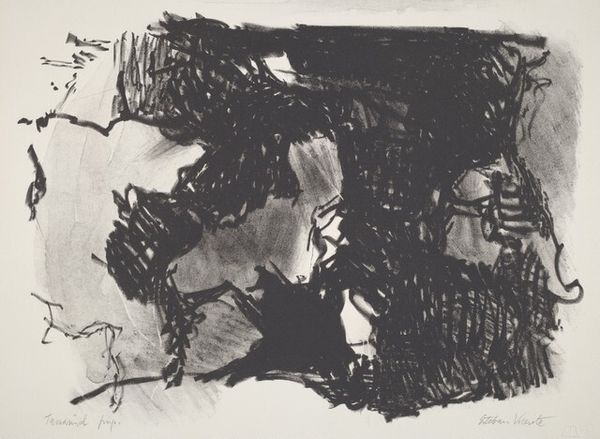
drawing, print, charcoal
#
abstract-expressionism
#
drawing
# print
#
charcoal drawing
#
form
#
abstraction
#
line
#
charcoal
Copyright: National Gallery of Art: CC0 1.0
Editor: So, here we have Robert Mallary’s "Vixen I," a charcoal drawing from 1962. There's something quite unsettling about the form; it's abstract, but suggests a figure, and it has an almost aggressive energy. What do you see in this piece? Curator: Unsettling is a brilliant word for it. For me, it's like glimpsing something primal, a raw, unfiltered emotion struggling to take shape. Mallary, working within Abstract Expressionism, used line and form here to almost carve out a psychic landscape, right? Think of de Kooning’s women, or even Francis Bacon. Does the density of the charcoal in the upper section suggest weight or pressure to you? Editor: Yes, definitely pressure. Like something is bearing down, trying to… what? Is it trying to solidify, or to escape? Curator: Beautiful question. That tension, that ambiguity, is where the power lies, I think. Is it emergence or disintegration? Is this form building itself up, or tearing itself apart? Mallary leaves us in that crucial space, suspended. What does "Vixen" mean to you? Editor: A vixen is a female fox, usually, and the word can mean a spiteful woman. But I don't quite see it... unless that darkness at the top is supposed to be a sly creature. Curator: Ah, see, I adore that you went straight to the literal vixen! What if we stretch that a bit, towards its inherent energy? We may feel confined by the work’s visual weight, but the freedom inherent in the charcoal medium hints otherwise. A dance in light and dark that echoes internal conflicts, maybe? I could ruminate on it for days... Editor: It definitely gives you a lot to consider, and it makes you realize there is always more than the literal story. Curator: Exactly! And sometimes the feeling it evokes is more valuable. A wonderful beginning point!
Comments
No comments
Be the first to comment and join the conversation on the ultimate creative platform.
